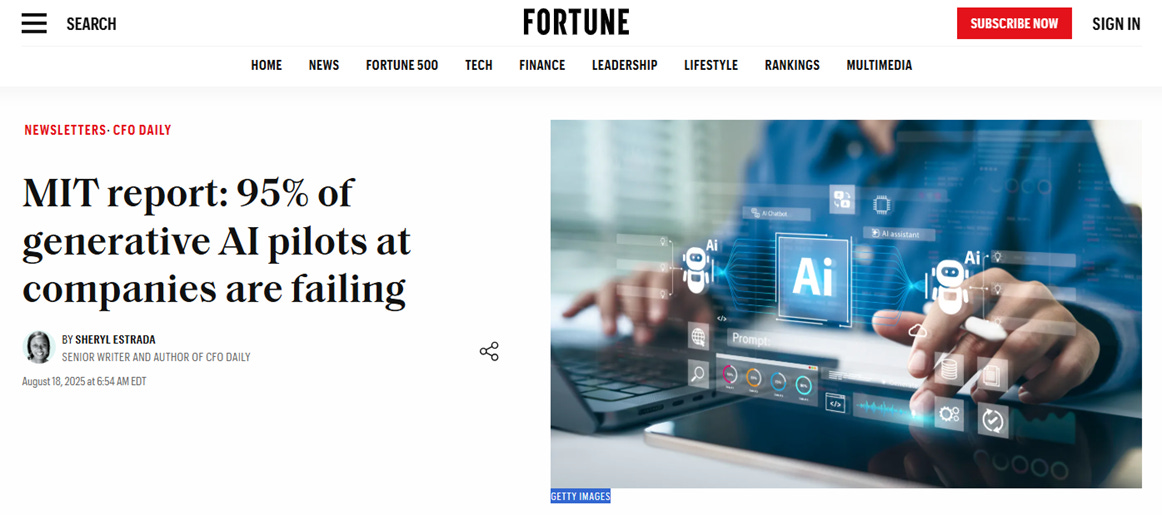Does AI Really Have No Value?
Reflections on MIT’s Project NANDA
ChatGPT, Google Gemini, Claude, and their countless competitors are almost free. Most offer a freemium tier, and even pro versions cost around $20 per month. That’s not much money.
And yet, MIT’s Project NANDA found that 95% of enterprise generative AI initiatives fail to deliver measurable value.
Somebody who believes in efficient markets would say: you’d never see a $100 bill lying on the pavement — if it were not fake, someone would already have picked it up. So why should you pick up a freemium toy that seems to create no enterprise value at all? Isn’t generative AI just another dotcom, another “big data” buzzword, another overhyped 3D printer moment?
Our hypothesis is simple: the 1 in 20 that succeed make enormous gains. And being in the top 5% is not Olympic-level achievement. It’s just being “pretty good.” After all, dotcoms, big data, and even 3D printing did create giants — just not for everyone.
When only a few companies apply new technology, they can still reshape entire industries. In the 2000s, piracy nearly destroyed the music business. By the 2010s, it was rebuilt entirely around AI-driven platforms. Today, most global music flows through Apple, YouTube, and Spotify. Record stores are gone, supermarkets no longer sell CDs, and human curation has been replaced by recommender engines. The winners — Apple and Google — now skim 15–30% of all streaming revenues simply by owning the platform.
Two lessons jump out:
AI adoption has a winner-takes-most dynamic. Costs will rise, and the gap between the few who adapt and the many who fail will widen. Losers risk being acquired, not just outcompeted.
Value isn’t in the algorithm — it’s in the assets, platforms, and IP built around it. MIT found that while most AI budgets go to sales and marketing, the highest ROI comes from back-office automation: cutting outsourcing, reducing agency spend, streamlining operations.
AI creates value only when tied to entrepreneurship, real (data) assets, and human capital. The algorithm is free. The grid — governance, curation, and strategy — is what costs, and what compounds.
This post originally appeared on reprex.substack.com on 15 September 2025 while we were preparing our masterclass and book that will be available from January 2026 in The Hague, Rotterdam, Brussels, and Budapest.



